Out and about

The surprising benefits of planting trees on farms
24 May 2024
A collaboration between bioeconomy expert Sandra Velarde and illustrator Jean Donaldson. Edited by Jonathan Burgess.
Kyle Wills is not afraid of planting trees on his beef and deer farm.
Kyle is a farm advisor from Central Otago. In the winter of 2022 and 2023 he planted over 7,000 trees in two different areas of his own farm. One area was unimproved native pasture and the other was a very exposed developed paddock that was not performing.
He has planted a variety of trees such as oaks, eucalyptus, alders, poplar, tagasaste, mulberry, pears, apples, apricots and plum trees.
These trees will be increasingly important on Kyle’s farm. The number of hotter days in summer in the next 20-70 years is expected to double in Te Wai Pounamu, the South Island of Aotearoa New Zealand. Cows without shade or shelter on site may suffer heat stress, and this affects the amount of milk that they produce. Winter days may become wetter as well, and it can get pretty windy out there on the plains.
Farmers care for their animals, and as the weather becomes more extreme, they will need more protection. Trees give them this protection. This is just one of the numerous benefits of planting trees on farmland, which is called agroforestry.
An inspiration for other farmers, and an easy way to get started
One day, a nearby farmer saw what Kyle was doing with the trees in his farm. She asked Kyle to design a similar system for her. She is concerned with future potential reductions of water to irrigate her sheep and beef farm and a lack of shelter for her livestock. Combined with low rainfall, poor soil water holding capacity, and exposure to winds and hot summers, this farmer liked the idea of planting some trees to improve the farm microclimate, and add other benefits such as creating feed for grazing animals and income from carbon sequestration.
As temperatures rise, summers become hotter, winters wetter, and water permits may become uncertain, trees may be a way to build resilience on farms.
If you’ve ever driven through or flown over the South Island, you might have noticed vivid green circles amongst the fields. These are irrigation circles, created by centre pivot irrigators – hulking metal spans that spray water across the fields as they trundle around in a circle.
The dry corners created by this approach to farming are an easy place to start with planting trees. If you put them all together, there are about 35,000 hectares of these corners in Canterbury, ripe for tree planting.

Word gets around
In his work as a farm advisor, Kyle spent a lot of time talking to farmers from Claxby Farms and Ngāi Tahu in Canterbury about planting trees on their farms. He has spent hours visiting and listening to farmers’ key concerns, values and farming objectives. Then he started looking for the trees that could grow on each farm to fulfil their different objectives.
Both farms cared about short term profitability but their long-term biodiversity goals are different. On their Hamua farm, Ngāi Tahu were willing to accept higher costs for establishment, utilising more fencing to create a space where native species could germinate if conditions allowed. Additionally, there were native species in the planting mix and the plan is to replace exotic trees with natives as they mature over time. This way, they would achieve their long term biodiversity aspiration, increasing the mana of te taiao.
Indigenous trees are natural magnets for native biodiversity. They behave as islands for indigenous flora and fauna. As pollinators and seed eating birds visit the trees for food, shelter or nesting places, indigenous trees encourage native afforestation. Two native species were selected for the agroforestry system on this farm: kōwhai and ribbonwood.

Kyle and the farmers tested some ideas face to face and on screen maps, with different layouts, tree species and shading rates. The farmers were full of questions:
- How will pasture production be affected if I put in trees in dryland corners?
- Which trees will create food for the animals or not cause any problems?
- Will I be able to get income from the trees without harvesting them?
- How much carbon will the trees sequester?
Together, they designed an agroforestry system that is both good for the environment and potentially profitable. Trees on the dry corners of irrigated dairy farms can reduce nutrient leaching, sequester carbon and keep the cows happy by providing food, shade and shelter.
A new era of agroforestry
In Aotearoa, past agroforestry experiences have not been positive. Previous approaches to planting trees on farms have been mainly based around pine trees for timber. This system was not designed with the farmer in mind, and was a little bit unimaginative.
These days we focus on farmers, and respond to their values and needs. We get out on to farms, talk to people, and listen intentionally to their needs. For someone like me, who has worked in agroforestry for decades, this is how the magic happens.
Putting trees back on farms is an exciting opportunity to create a resilient rural landscape for the future.
- Check out the research behind this story
- Take a tour of agroforestry systems within irrigated dairy farms in Waimakariri
Thank you to my colleague and farm advisor Kyle Wills for showing me how to get out of the books and make the magic happen, and to Cheryl Palm, one of my early agroforestry mentors whose legacy will live on with all the young scientists she trained. – Sandra
Sandra Velarde works on bioeconomy innovation and alternative forestry at WSP and is a Principal Investigator with Te Pūnaha Matatini.
Jean Donaldson is a designer and native bird fanatic based in Te Whanganui-a-Tara. You can see more of her work at https://jeanmanudesign.com/.
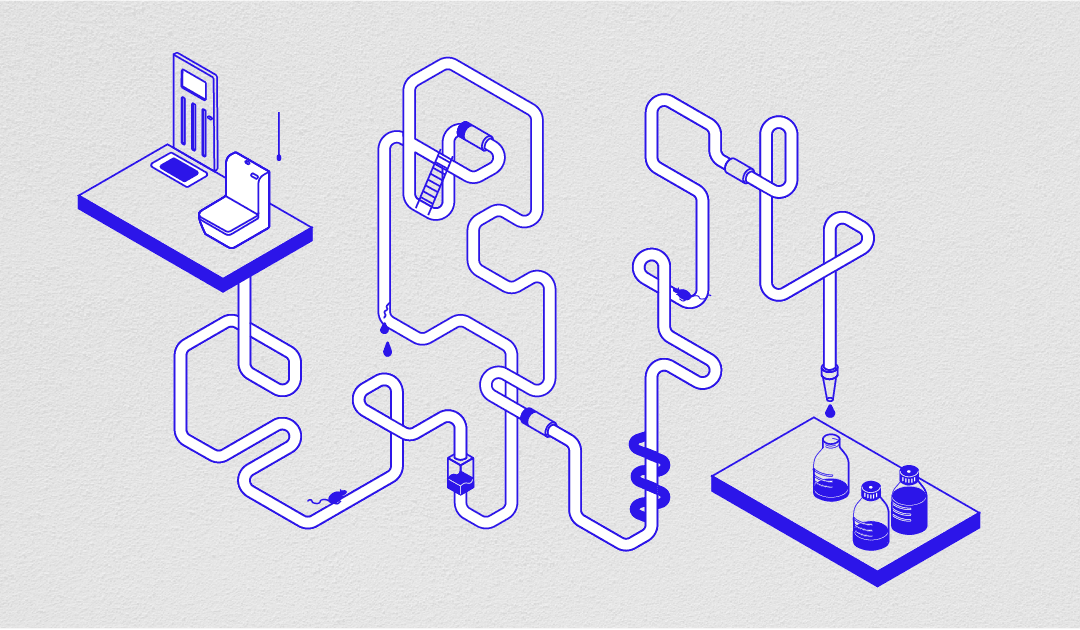
Every flush a donation to science
8 April 2024
A collaboration between analytical chemist Lisa Pilkington and illustrator Jean Donaldson. Edited by Anna Brown and Jonathan Burgess.
You probably don’t give a second thought to what you flush down the toilet. But wastewater and all that it contains provides valuable knowledge to researchers working in wastewater-based epidemiology.
Wastewater is everything you put down the drain – including number ones and number twos. Every time you rinse something down the sink, wash your clothes, have a shower or go to the bathroom, the wastewater flows into sewage pipes and travels to a wastewater treatment plant to be cleaned up before it’s allowed to enter waterways.
Researchers working in wastewater-based epidemiology analyse wastewater to find particular chemical compounds or ‘biomarkers’ that can give them information about a population’s exposure to or consumption of certain substances or microorganisms.
During the height of the Covid-19 pandemic, you most likely would have heard about the analysis of wastewater to identify infections in individual communities. Wastewater-based epidemiology became an essential tool that helped scientists and the people making decisions about our health understand and monitor the progression of Covid-19 in the community. This type of investigation has most commonly been used to understand consumption of illicit drugs in populations – something that it is difficult to obtain sales data on!
We have recently applied this method to understanding alcohol consumption in our communities. In 2021 my team led one of the most comprehensive studies on alcohol usage ever conducted globally. Our six-month long study looked at alcohol usage in approximately 40% of Aotearoa’s population. It certainly gave some fascinating insights into our drinking habits.
But before we get to those – how do we analyse alcohol consumption using wastewater-based epidemiology? Let’s go through the journey of a biomarker. When you have that pre-dinner gin and tonic, frosty pint at the neighbourhood brewery or pinot noir on the couch after work, ethanol is the key ingredient. Our liver changes ethanol into a range of other compounds, including one called ethyl sulphate – the biomarker that we looked for in our work.
These compounds are then excreted in urine and flushed into the wastewater system, ending up at your local wastewater treatment plant. It is at the inlet of this treatment plant that we collect wastewater samples and take them to the lab for analysis. We measure the amount of ethyl sulphate in the samples and then use this value in calculations to work out the amount of alcohol consumed per person in the wastewater treatment plant catchment area.
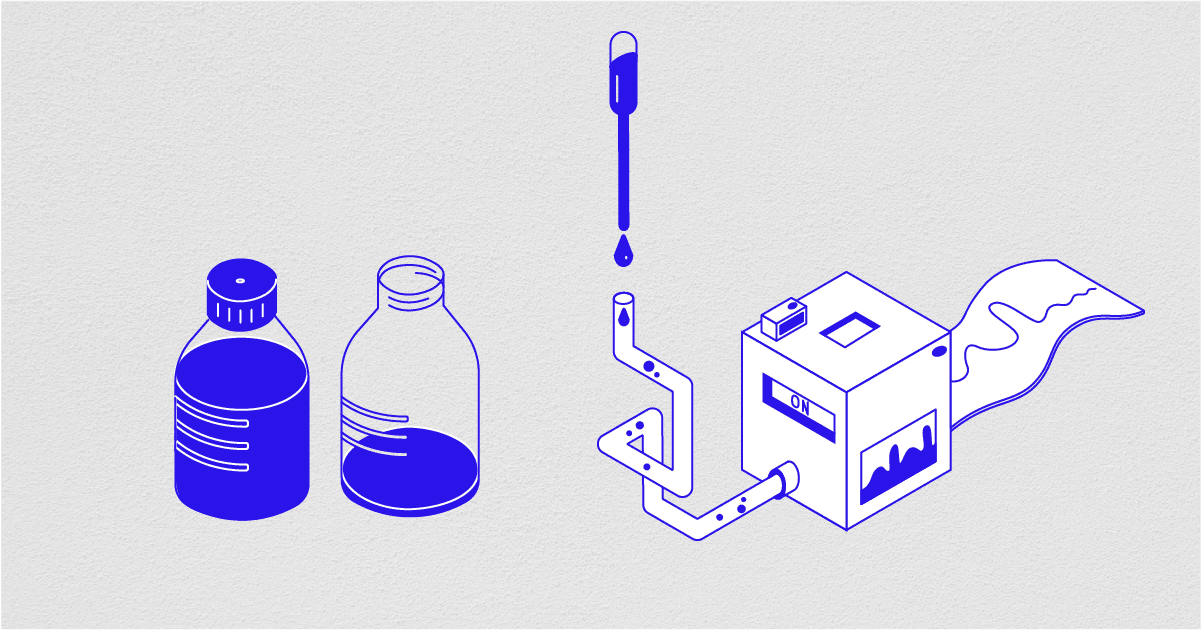
Wastewater-based epidemiology has a lot of advantages over existing methods such as surveys and sales data in understanding a population’s consumption habits. It is unbiased, non-invasive, informative, low cost and near real time. Even when survey and sales data is available, wastewater-based epidemiology can fill gaps and provide depth and nuance to our understanding of consumption habits. This was certainly true for our study of alcohol in Aotearoa.
Some of the results of our study were fairly unsurprising. They showed that in Aotearoa, we consume more alcohol on the weekends compared to weekdays, more on long weekends compared to normal weekends, and during lockdowns all of these trends went out the window!
However, this study also unveiled some surprising trends that we didn’t anticipate:
- Larger cities have lower levels of alcohol consumption.
- On average, New Zealanders consume less alcohol than many other countries, including Australia, the United Kingdom, Canada and the United States of America.
- Drinking levels are higher in the South Island compared to the North Island.
- Spikes in consumption could be mapped back to particular events happening on a given day, including a one-night-only male revue show, ‘The Stallions’, performed in Queenstown.
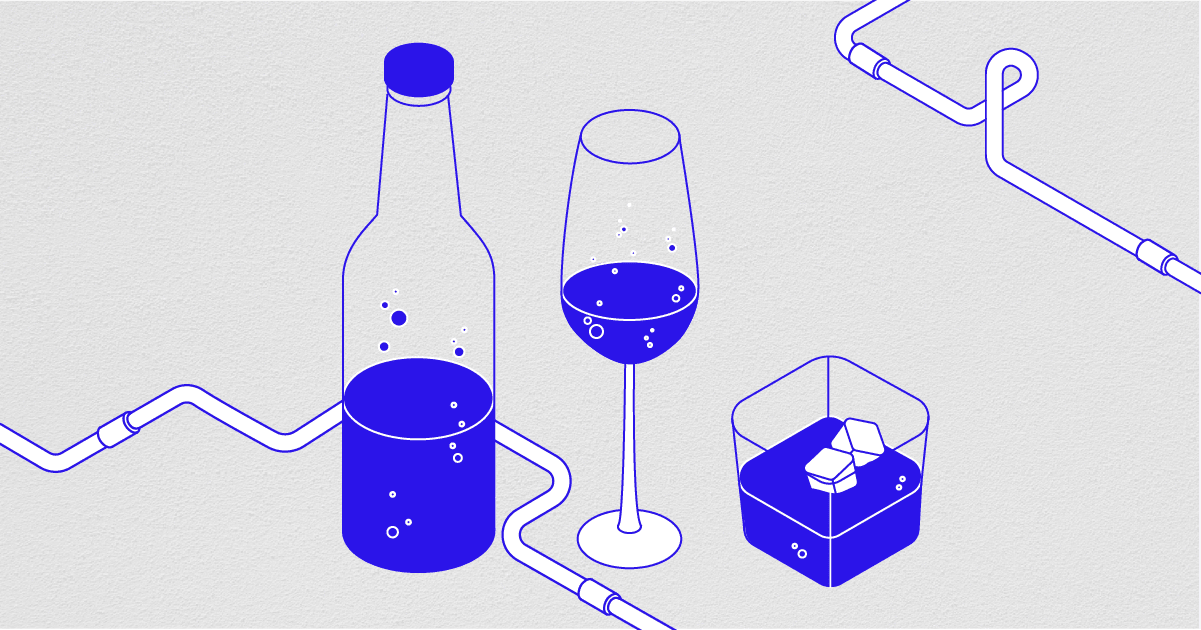
The results of this investigation not only highlight the detailed level of information that can be obtained using wastewater-based epidemiology, but also show how useful this approach can be to inform organisations and help direct resources where they’re needed the most. Looking to the future, I have two different, but equally as important studies in the pipeline. The first is understanding vaping habits in Aotearoa. The second is investigating whether we can extend the techniques we have developed to monitor cancer prevalence in our communities.
So next time you flush, take a moment to congratulate yourself on contributing to research that can make a positive change to our communities.
Lisa Pilkington is an analytical chemist at Waipapa Taumata Rau, the University of Auckland, and a principal investigator with Te Pūnaha Matatini. You can read more about the results of the alcohol consumption in Aotearoa study here: https://doi.org/10.1002/asia.202301120.
Jean Donaldson is a designer and native bird fanatic based in Te Whanganui-a-Tara. You can see more of her work at https://jeanmanudesign.com/.
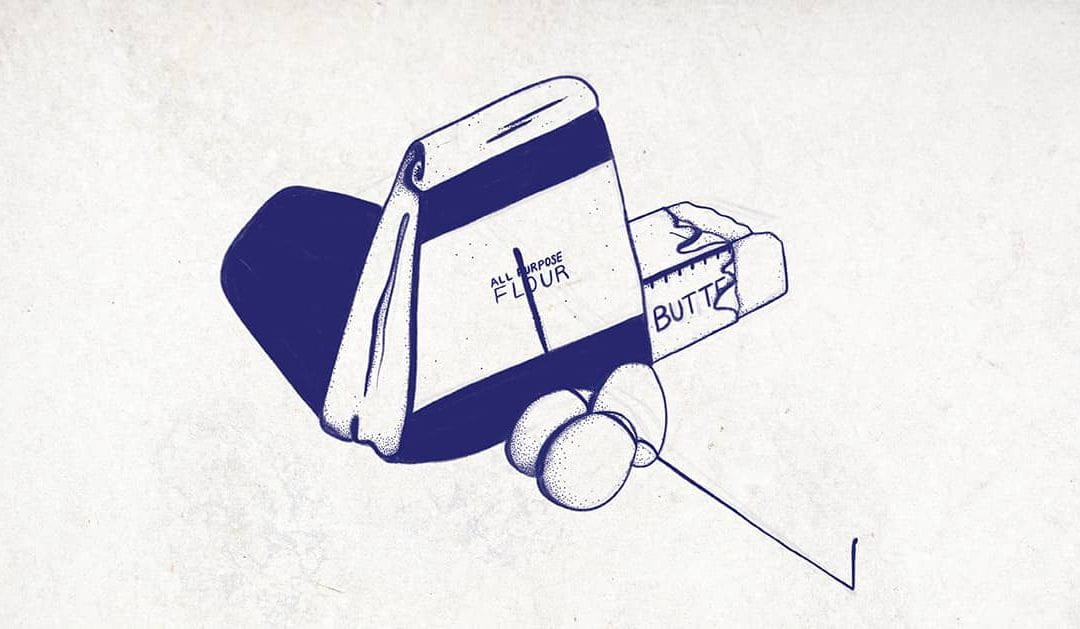
Sifting through the unknown with recipe-free research
I’m a baker, so I like having a recipe to follow. It’s comforting to have a set of ingredients and a list of instructions to start with — even if I treat the recipe as more of a guide than directions for a science experiment. Knowing where to start, and what I will most likely end up with at the finish helps me feel like I know what I’m doing, and means new recipes still have a sense of familiarity to them.
Research, or other projects, are similar. We generally have an idea of what ingredients and equipment we need, along with a recipe — or plan — of what we need to do to reach the outcome at the end. These plans are comfortable and familiar. They help us feel like we’re on the right track, and even when things don’t go as expected, we can figure out where things are different from the original plan, and either solve them or make a new plan from there.
Co-production is not like that.
In my experience so far, co-production is more like one of those team challenges in a MasterChef bake off — they’ve asked you to make a selection of items for afternoon tea and left it at that. Except you also don’t know who’s in your team, and your test kitchen hasn’t been kitted out. So before you can start, you need to figure out who’s in the team and what equipment you might need or have available — partway through you might also discover you’re actually in a field kitchen rather than the test kitchen!
Making a selection of items for afternoon tea sounds clear enough, but when you start thinking about it, you realise how many possibilities there are. Using co-production to create a selection of research questions about women’s health that are a priority to women is similarly broad. We’ve had to grapple with questions such as “Is women’s health all health issues that impact women?” or “Is it only those health issues that just women experience?”
When you don’t have a clear recipe to follow, it can be pretty hard working out where to start — the ingredients you use are influenced by what equipment you have available, and vice versa.
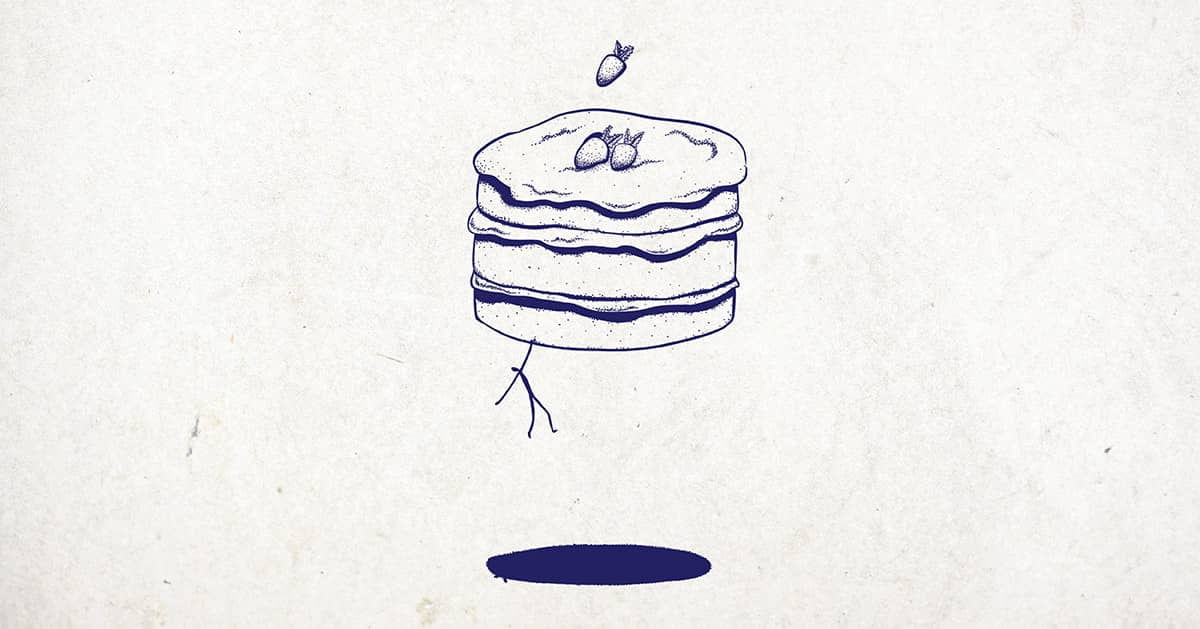
Thankfully, unlike a MasterChef challenge, we don’t have a ridiculously tight time limit. We’ve been able to take our time getting to know each other in the core research team. A key principle of co-production is prioritising relationships, so developing the team and designing foundational values has been important.
In co-production, the people or communities who are likely to benefit from the project need to be involved all the way through, and their lived experiences valued. To keep the MasterChef kitchen image going, before we could start making any afternoon tea items, we need to know who’s going to be eating the afternoon tea. Then we can make sure we meet any requirements they have, and use what’s important to them to help make the decisions we make.
So far in The Co-production Project, we’ve spent quite a lot of time talking to women about what’s important to them when it comes to women’s health. We connected with these women through the charity Good Bitches Baking, who I already had a relationship with. These women are volunteers for the charity, whose aim is to bake the world a better place.
Through conversations with this community we have been able to start considering areas for women’s health that research questions can be developed about with their input. Fittingly, we’ve mostly talked over a cuppa and cake. This more informal style helps us to take the time to build connections and listen to their experiences.
I wouldn’t say we’ve got a test kitchen kitted out yet, nor have we figured out an ingredients list. But we are getting more comfortable at sitting with the discomfort of having no recipe to follow.
Anjuli Muller is a PhD student and TPM Whānau member exploring co-production and participatory public engagement through the subject of women’s health in Aotearoa New Zealand.
Jean Donaldson is a designer and native bird fanatic based in Te Whanganui-a-Tara. You can see more of her work at https://jeanmanudesign.com/.
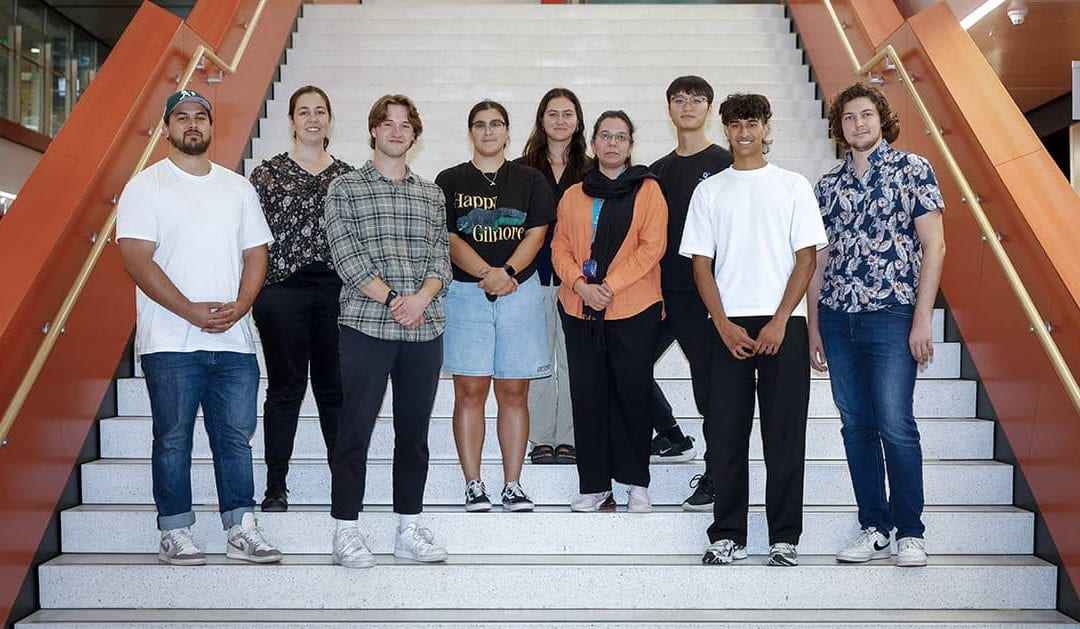
Internships support a new generation of researchers
Image: Te Pūnaha Matatini summer interns 2023-2024. Left to right: Jordan Phillips, Madeleine Barber-Wilson, Liam Gibson, Jaiya Bharti, Tiana Marshall, Zainab Rizvi, Jinglong Zhu, Mahin Panchia, Jared Clarke. Not pictured: Arwyn Whaanga, Halavaka Chapman, Tavake Tohi.
6 March 2023
A summer internship can be a lonely experience. That wasn’t the case for the 12 interns supported by Te Pūnaha Matatini over the 2023-24 summer.
As they worked on their diverse research projects in complex systems, the interns also came together to build whanaungatanga, experience the pioneering transdisciplinary approach of Te Pūnaha Matatini, and share their work with each other, supported by Te Pūnaha Matatini Deputy Director Associate Professor Mike O’Sullivan.
At Te Pūnaha Matatini we are growing and supporting a new generation of researchers who are ethical, collaborative, and do work that matters for Aotearoa New Zealand. This summer, our interns worked on projects ranging from the relationship between mātauranga Māori and science, how Pacific people perceive science in Aotearoa, enhancing an early warning system in a coronary care unit and improving virtual reality displays of a flood model, through to mathematically modelling lake health and investigating intergenerational language acquisition and transmission of te reo Māori.
“It gives us immense joy to see these interns coming through with all their skills and energy,” says Te Pūnaha Matatini Co-Director Associate Professor Priscilla Wehi. “It’s such a pleasure to interact and learn from them, and hopefully they will have learned something along the way as well.”
Madeleine Barber-Wilson (Ngāti Kahungunu ki te Wairoa, Ngāti Ruapani mai Waikaremoana) spent the summer working with Te Pūnaha Matatini Principal Investigators Associate Professor Graham Donovan and Dr Matiu Prebble as part of a project seed funded by Te Pūnaha Matatini to mathematically model the health of Wairewa Roto. Maddie explains that “shallow lakes are known to undergo abrupt transitions between a cloudy, polluted state with frequent algal blooms and a clear, healthy state based on changes in underlying conditions such as phosphorus levels. These critical transitions can be modelled mathematically, and our goal is to use a model to find mathematical early warning signals of changes in state for Wairewa Roto. This lake has particular significance as it is a customary eel fishery for Ngāi Tahu, so restoring its health means protecting a source of mātauranga and kai for iwi and hapū of the rohe.”
Te Pūnaha Matatini is the Aotearoa New Zealand Centre of Research Excellence for Complex Systems, with researchers and students based across the country. We coordinate an internship scheme for partner organisations including iwi, ministries, government departments, and private companies.
Mike explains that “we want to give our interns a small community to feel like they’re a part of over summer, because sometimes internships can be lonely. It’s really exciting to see such talented researchers coming through our education system, and the diverse topics that they are all contributing to.”
If you are from an organisation that is interested in collaborating with us on future internships, get in touch at tepunahamatatini@auckland.ac.nz.
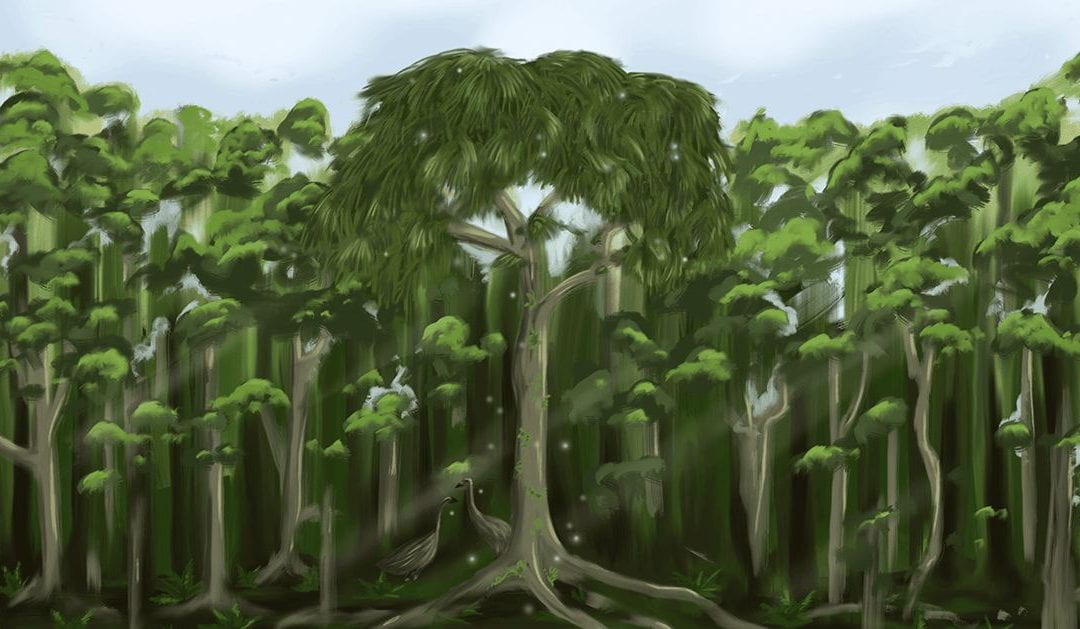
An ancient witness to changing land stewardship
4 March 2024
A collaboration between freshwater ecologist Kati Doehring and illustrator Jean Donaldson. Edited by Jonathan Burgess.
Tēnā koe – let me introduce myself. My name is dacrydium cupressinum, but most of you would know me as rimu. Gather close, for I have a story to share – a tale woven with resilience and hope.
My home lies nestled within a 400-hectare farm in the enchanting expanse of Dovedale Valley, cradled in the embrace of Te Tau Ihu, the top of the South Island of Aotearoa New Zealand. Here, amidst the ebb and flow of seasons, I have stood witness to the dance of life for centuries untold.
I have seen many creatures come and go. During my childhood, when my brothers and sisters were still standing tall next to me, big feathery chicken-like critters roamed my courtyard. Those were tranquil and harmonious days.
Then, during my teenage years, two-legged creatures appeared. Their needs were very different from mine, and they changed what used to be. It was in 1881 that the Win family became stewards of this land, altering the tapestry of my existence forever. John, the first generation farmer, did what was right at the time. They took my brothers and sisters, my aunties and uncles and used them to build their houses, churches and schools. They did what was right at the time.
I held on tight to what I had – my roots, my beliefs, my mana. I stood taller than ever at 60m in height. I am, after all, one of Aotearoa’s tallest forest species.
Life for me was in constant flux. Farming generations came and went – second, third and fourth – and with them the way they farmed. From Clydesdale horses to machines taking away my kin, then bulldozers root raking the soils that protected my veins. They put up fences to keep pigs, sheep and cattle in place, and secured hillsides and strengthened waterways to stop them from washing away. They did what was right at the time.
I watched how the land around me transformed into mosaics I had never seen before. Different creatures appeared, adding new colours to my courtyard. Goats, possums, magpies, wasps, old man’s beard and wild pigs spread like wildfire. And I stood tall.
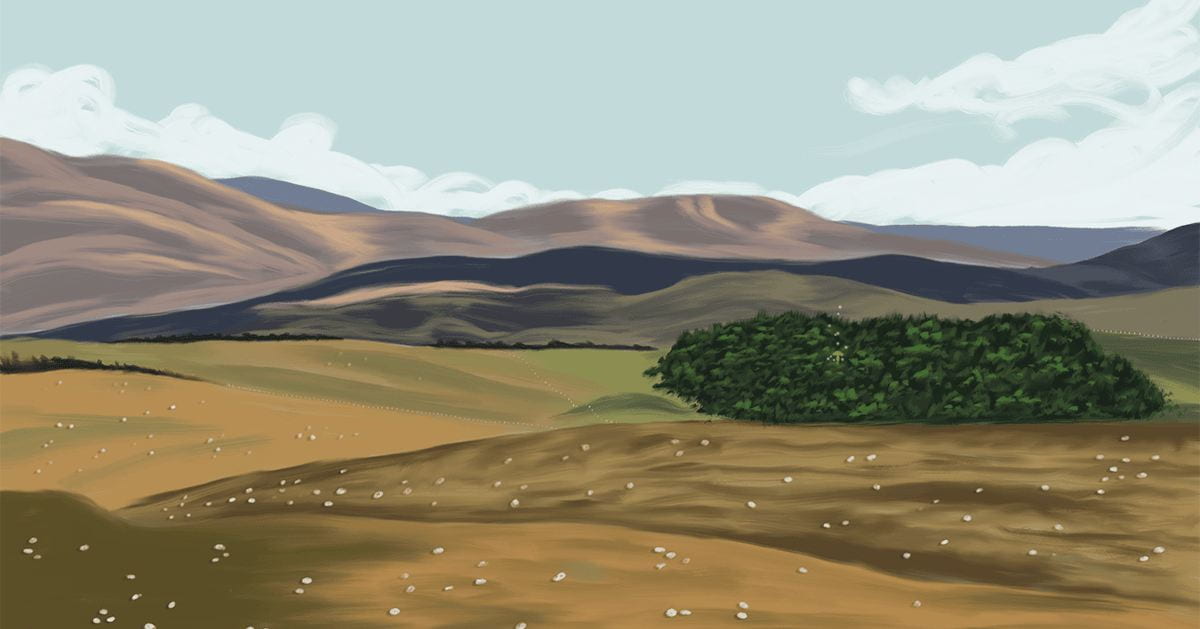
Over the last two generations, I noticed more change and it made my roots tingle with excitement. Twenty years ago, the fifth-generation farmer, Arthur, together with his family, ensured that my family could come back and have a safe space to grow and thrive – two families bonded through time. They protected the patch of land I stand on so tall – all 25 hectares (61 acres) – and called it a Significant Natural Area. They did what was right at the time.
Today, under the stewardship of the sixth generation, led by Bryce, I am allowed to thrive once more. Together with his parents Arthur and Debbie, and Grandfather Bob, they farm for life, not just for a living. They do what is right. They reduced stock numbers over time and decreased fertiliser use on their farm.
As for me, I stand taller than ever. With each passing day, year, decade and century, I await the dawn of tomorrow with eager anticipation. I am an ancient witness to the many facets of land stewardship, observing the shift of environmental goalposts across the past and future of land management in Aotearoa.
Just the other day, I saw Bryce and his family plant a seedling, whose story can unfold under the protection of my canopy over centuries to come. They will do what is right.
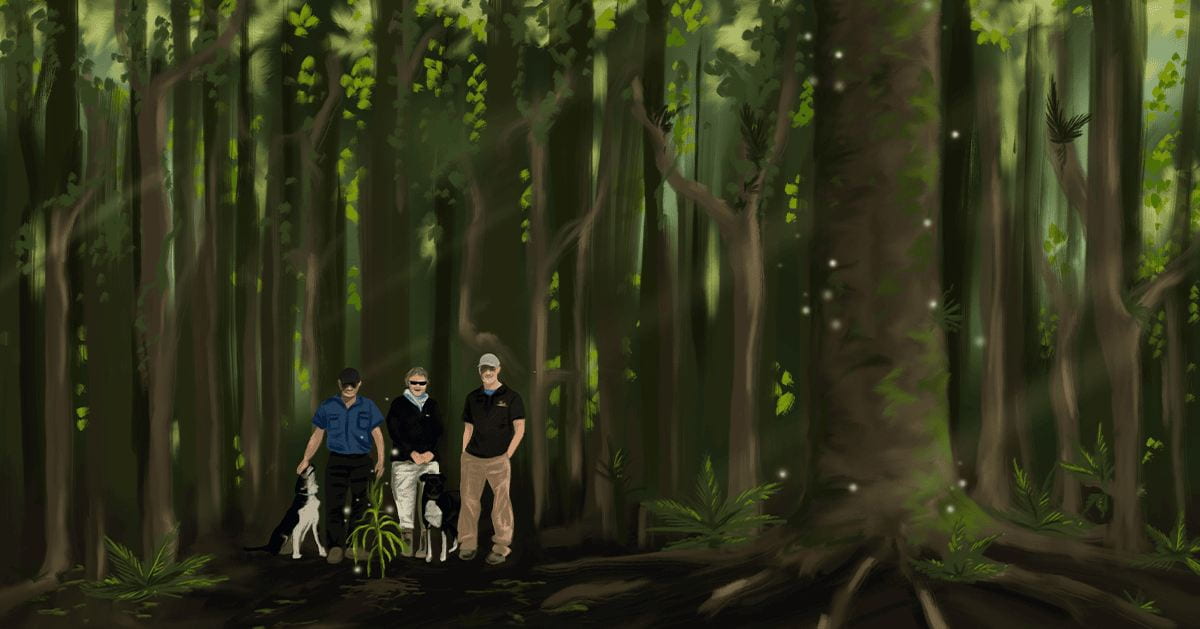
Special thanks to Debbie Win for sharing the Win family story with us.
Kati is a freshwater ecologist who specialises in science communication, and a member of TPM Whānau. You can read more about her work with freshwater catchment communities here: https://ourlandandwater.nz/project/register-of-land-management-actions/
Jean Donaldson is a designer and native bird fanatic based in Te Whanganui-a-Tara. You can see more of her work at https://jeanmanudesign.com/.
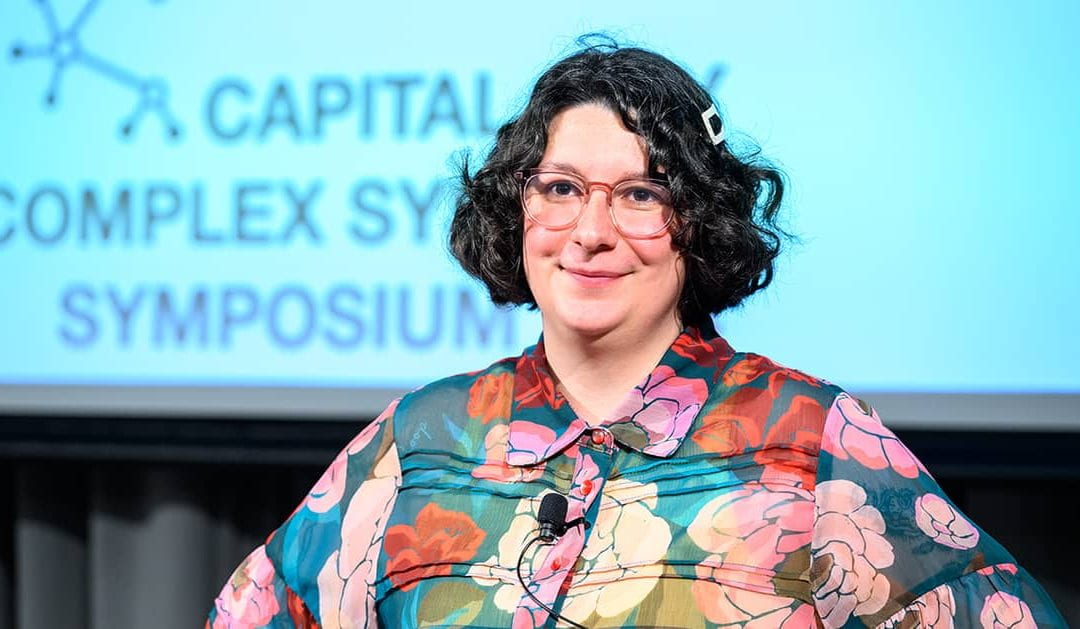
International experts in complex systems gather in Aotearoa
Image: Dr Juniper Lovato presents at the Capital City Complex Systems Symposium 2024. Photo by Mark Coote.
23 February 2024
In a world facing unprecedented challenges, the need for innovative solutions has never been more pressing.
Last week Te Pūnaha Matatini brought together national and international experts in complex systems alongside practitioners in government, industry and community to explore how the study of complex systems holds the key to unlocking sustainable solutions for our most daunting challenges.
The Capital City Complex Systems Symposium 2024 interwove the latest advances in complex systems research with the concerns of communities, business and policy around how to ensure prosperous, resilient, equitable and just democratic life in a time of grand challenges.
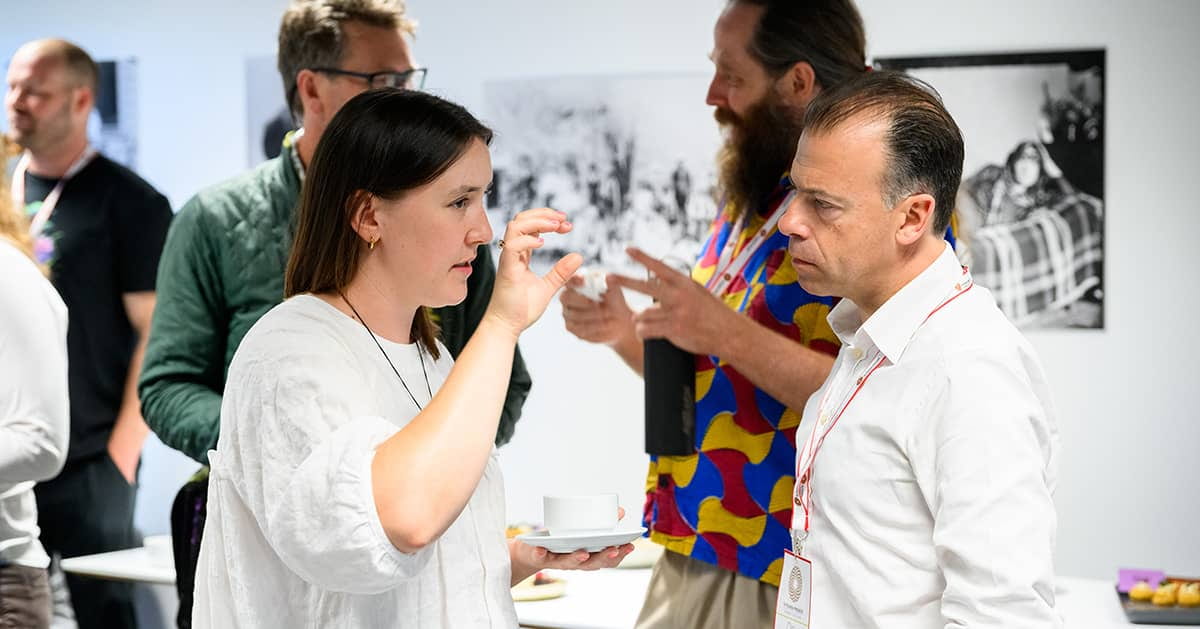
The Capital City Complex Systems Symposium was a chance to network with international complex systems experts.
Stephen Hawking famously said that the twenty-first century would be the “century of complexity”. Te Pūnaha Matatini has been leading the charge in Aotearoa New Zealand over the last decade with its pioneering transdisciplinary approach that applies complexity science to the critical and pressing issues of our time. “The issues we face – whether it’s building resilience against natural disasters, rethinking human mobility, preserving fragile ecosystems, or enhancing health and wellbeing – are deeply interconnected,” says Te Pūnaha Matatini Co-Director Associate Professor Priscilla Wehi. “They are not isolated problems with simple solutions but rather intricate puzzles demanding a holistic approach.”
The Capital City Complex Systems Symposium 2024 featured keynote presentations from complex systems experts from Vermont, Italy, South Korea and Australia. They spoke about issues of consent in socially networked environments, explored the complexity of human proximity networks, asked how we can unleash productivity through understanding creativity, and explored ethical dilemmas in disease interventions.
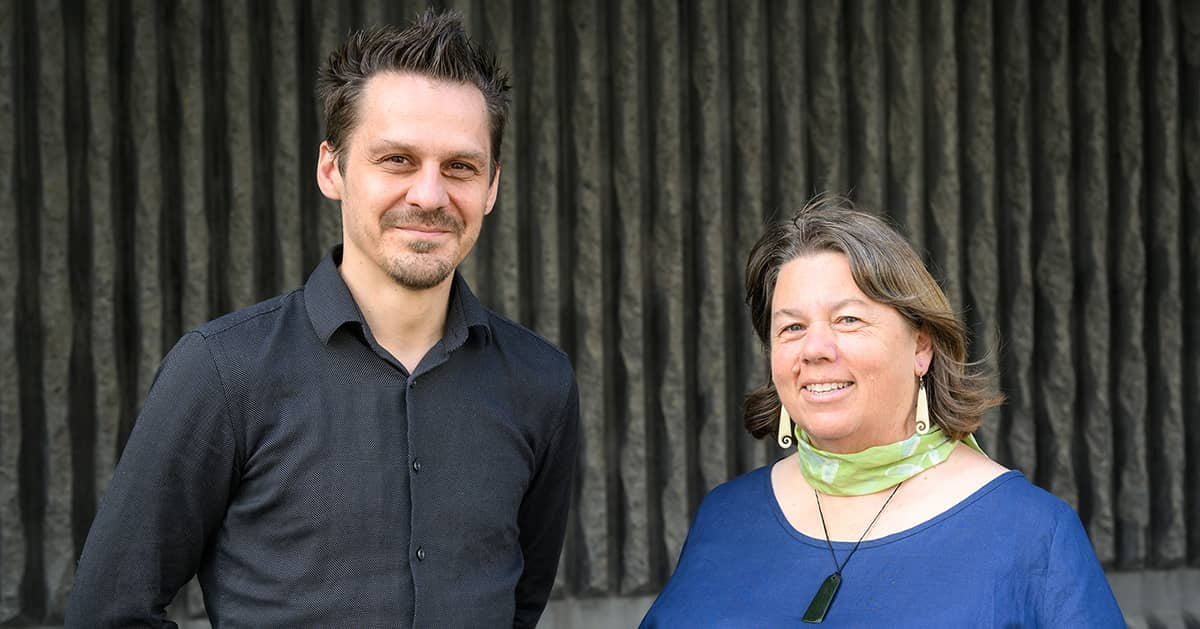
“The issues we face…are not isolated problems with simple solutions but rather intricate puzzles demanding a holistic approach.” Te Pūnaha Matatini Co-Directors Professor Markus Luczak-Roesch and Associate Professor Cilla Wehi. Photo by Mark Coote.
University of Auckland Deputy Vice-Chancellor, Research, Professor Frank Bloomfield, said that “the complexity of the world we live in has been brought to the forefront of our attention over the past few years. The University of Auckland is proud to host Te Pūnaha Matatini, a Centre of Research Excellence, and to be at the heart of the complex systems research community in Aotearoa New Zealand.”
Over two days, contributed talks challenged existing paradigms with innovative new approaches to biosecurity and disease transmission through to artificial intelligence, economic complexity and data science for transport policy. A stimulating poster session explored environmental policy reforms, the trajectory of te reo Māori language revitalisation, and creating simulation frameworks for entire hospitals.
Participants raced against the clock in lightning talks to explore the complexity of data in the public sector, data quality in large language models, the philosophy of complexity, and the relationships between research and policy. The symposium was purposefully single streamed with generous breaks, to build connections and community in complex systems research and practice.
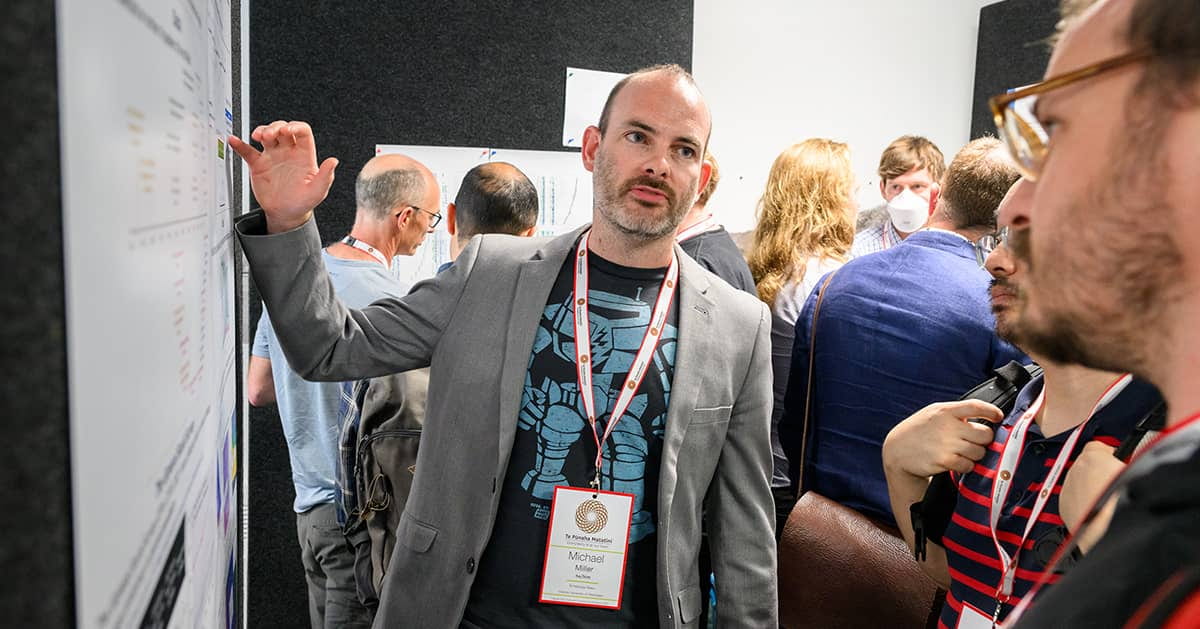
Michael Miller discusses the trajectory of te reo Māori in Aotearoa. Photo by Mark Coote.
Professor Nicola Gaston ended the symposium by making the case that complex systems researchers are uniquely well placed to understand matters of equity, inclusion, and diversity.
Representatives from government ministries and commissions, consultants, entrepreneurs and specialists in data science, sustainability and machine learning were among the participants. “This was a unique opportunity to learn from experts, network with peers, and discover new perspectives on complex systems to improve the lives of communities,” says Te Pūnaha Matatini Co-Director Professor Markus Luczak-Roesch.
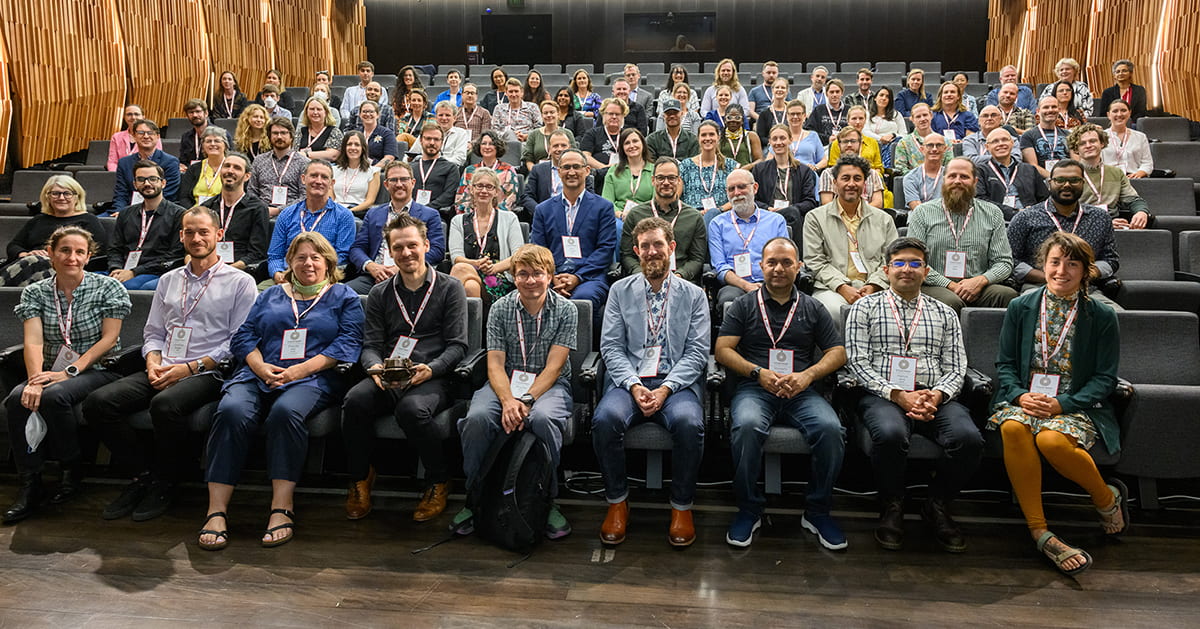
The Capital City Complex Systems Symposium 2024 brought together 100 researchers and practitioners in complex systems. Photo by Mark Coote.
Te Pūnaha Matatini is the Aotearoa New Zealand Centre of Research Excellence for Complex Systems, and is hosted by the University of Auckland. It brings together 101 researchers in complex systems from across Aotearoa for collaborative and strategically focused research that creates significant knowledge transfer activities.
“Complex systems theory provides a groundbreaking framework that illuminates the hidden connections and feedback loops shaping our world,” says Markus. “By understanding the structure and dynamics of these systems, complex systems researchers provide invaluable insights into how small changes can ripple outward, creating transformative impacts on a global scale. It’s an incredible privilege that through Te Pūnaha Matatini we are part of the global network of leading scholars in this cutting-edge field of research.”
The next Capital City Complex Systems Symposium is planned for 2026.
Find out more about the Capital City Complex Systems Symposium 2024.
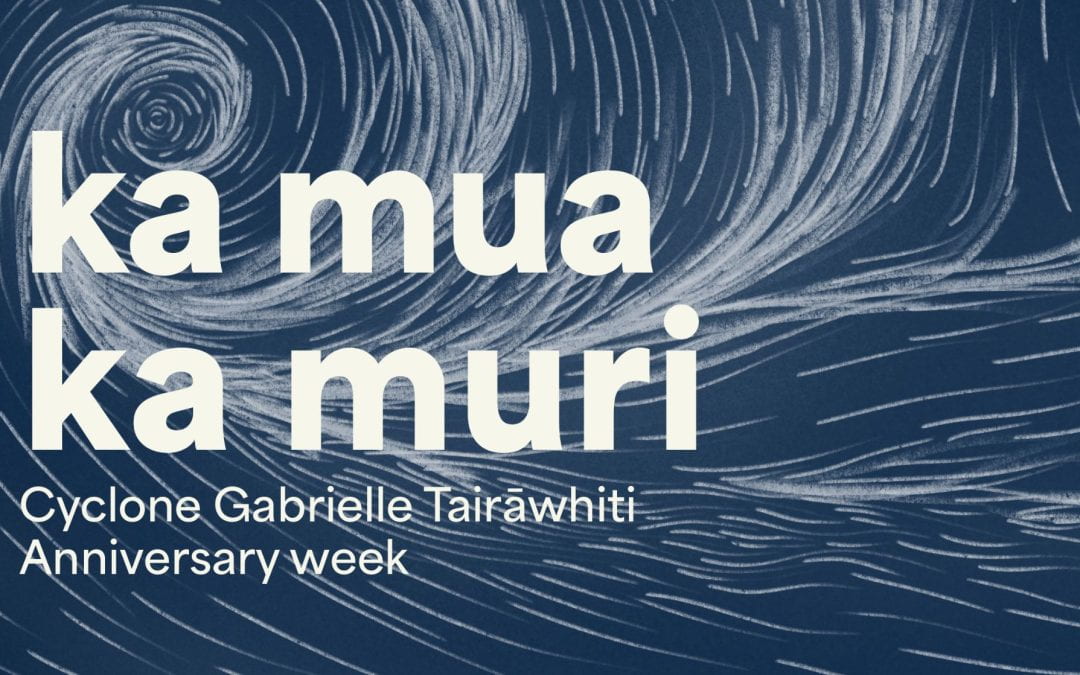
Hope and resilience in Tairāwhiti
31 January 2024
A week-long series of events from 9-16 February 2024 will mark the anniversary of Cyclone Gabrielle which devastated the East Coast of the North Island in February 2023.
In commemoration of the one-year anniversary of Cyclone Gabrielle’s impact on the Tairāwhiti region, Te Weu Tairāwhiti is organising a week-long series of events aimed at reflecting on the past, understanding the present, and envisioning a resilient future. Titled ‘Ka Mua Ka Muri’, the series of events will run from 9-16 February 2024 in communities around the region. Te Pūnaha Matatini is a co-sponsor of these events.
The main highlights of the week include a two day research symposium, a series of community hui showcasing local research undertaken over the past year, and a creative collaboration and exhibition showcasing regional climate and community initiatives.
Te Pūnaha Matatini Principal Investigators Professor Holly Thorpe, Professor Anna Brown and Associate Professor Mike O’Sullivan will be taking part in the events.
Anna is the head of Toi Āria: Design for Public Good, a research centre at Massey University. Toi Āria are collaborating with Te Weu to host a group of creatives from around Aotearoa to work with communities and projects around the region to have their experiences and perspectives interpreted through visual arts, music and creative writing.
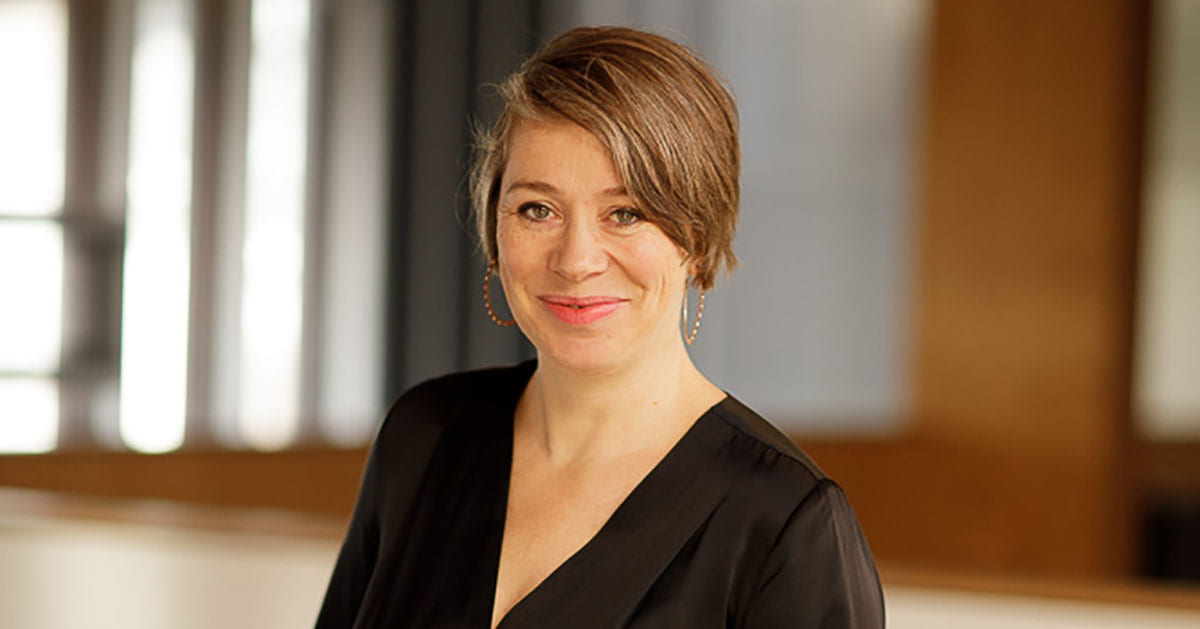
“We don’t know what will be produced but everyone is definitely looking forward to the process and outcomes!” – Professor Anna Brown
Anna, who has family in Tairāwhiti, says she was personally motivated to do something to support the region after seeing the impacts on her family and friends.
“When the cyclone hit and we were watching from afar we didn’t know how to contribute or help,” says Anna. “This project lets those of us from other areas contribute our creative skills and networks. We’re looking forward to getting alongside some of the amazing communities of Tairāwhiti to tell stories of hope and resilience. This project feels like a tangible way to support this region that still has a long way to go in the recovery journey.”
“We are bringing some of the country’s top creative talent including a jazz singer, a cartoonist, a multimedia designer, social media expert and a number of creative writers and journalists to jump into creative processes with Tairāwhiti’s artists and communities. We don’t know what will be produced but everyone is definitely looking forward to the process and outcomes!”
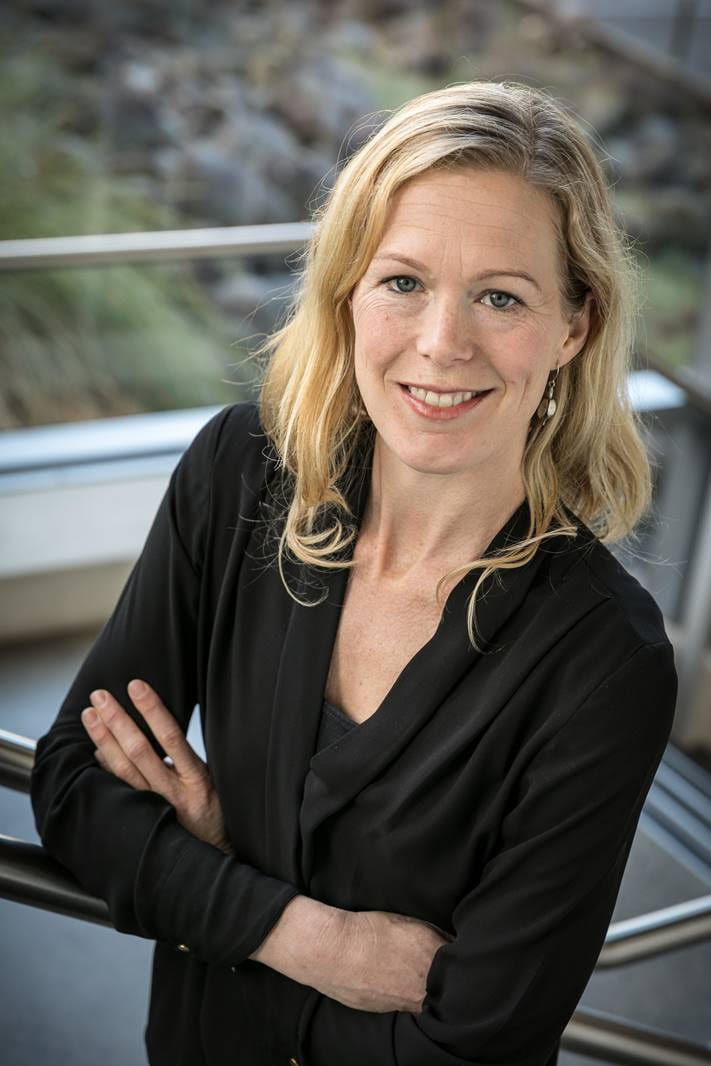
“These interviews from across the region are taonga that provide really important insights around what happened, what worked well and what could be done differently in the future.” – Professor Holly Thorpe
Holly has been involved in organising the research symposium, and will be presenting the work that she led with Josie McClutchie that explored the health and wellbeing impacts of extreme weather events in Tairāwhiti through interviews with nearly 50 health professionals and residents. “These interviews from across the region are taonga that provide really important insights around what happened, what worked well and what could be done differently in the future,” says Holly.
“It’s really important that the learnings this project generates are used locally, not just by central government. Repeated weather events have had a significant impact on the health and well-being of our communities. We also have some amazing stories of survival and support within neighbourhoods and villages. Health workers and services that were stretched throughout the Covid-19 pandemic have found ways to be innovative and look after the most vulnerable members of our community through this crisis as well.”
Mike O’Sullivan is deputy director of Te Pūnaha Matatini, and worked with Atawhai Tibble to form the Resilient and Sustainable Tairāwhiti (RASTR) group that is working with communities in Tairāwhiti. “RASTR connected with Te Weu Tairāwhiti early on,” says Mike. “We now have a bunch of new relationships and projects underway across the region from Anna Brown’s creative communities initiative as part of Ka Mua Ka Muri, to a distributed energy project, Holly Thorpe’s new project with rangatahi in the region, and work on digital ecosystems that can predict flood impacts within specific catchments.”
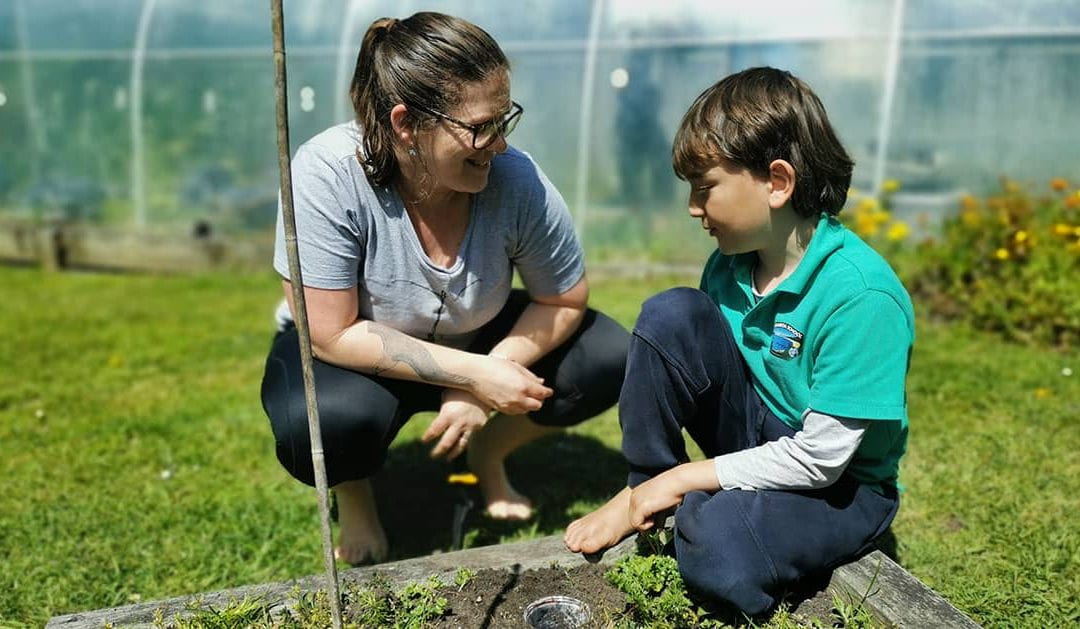
Wings, webs and wonders on the Chatham Islands
Image: Chrissie Painting and a student from Kaingaroa School learning about bugs.
26 January 2024
Written by Chrissie Painting and Tammy Steeves.
You can’t get much more remote than the Chatham Islands, a bumpy plane ride 840km east of Ōtautahi|Christchurch. Although the archipelago is made up of about ten islands, people live on just two: Rēkohu | Wharekauri | Chatham Island and Rangihaute | Rangiauria | Pitt Island. The rest are wild places, uninhabited by humans but important refuges for many threatened species.
A poignant issue for Chatham Islanders is that many miheke | taonga | treasured species were once found on Rēkohu and Rangihaute, but due to invasive predators are now restricted to these other islands that are tightly biosecurity-controlled and off-limits to the public. While visiting researchers are given the privilege to visit these remote islands, only a handful of residents have had the opportunity to interact with many of the species that make their islands unique.
With that challenge in mind, several Te Pūnaha Matatini investigators visited blustery Rēkohu and Rangihaute in October 2023 to connect with the community through a series of school visits, hui and a public outreach event. Chrissie Painting and Tammy Steeves, both principal investigators at Te Pūnaha Matatini, together with Roseanna Gamlen-Greene (TPM Whānau), Liz Parlato and Morgane Merien made up our team of five wāhine from five institutes, joined together by our shared values and passion for science. We were also joined by two special stowaways, Chrissie’s daughter (age 6) and Tammy’s son (age 10), who are both fabulous science communicators.
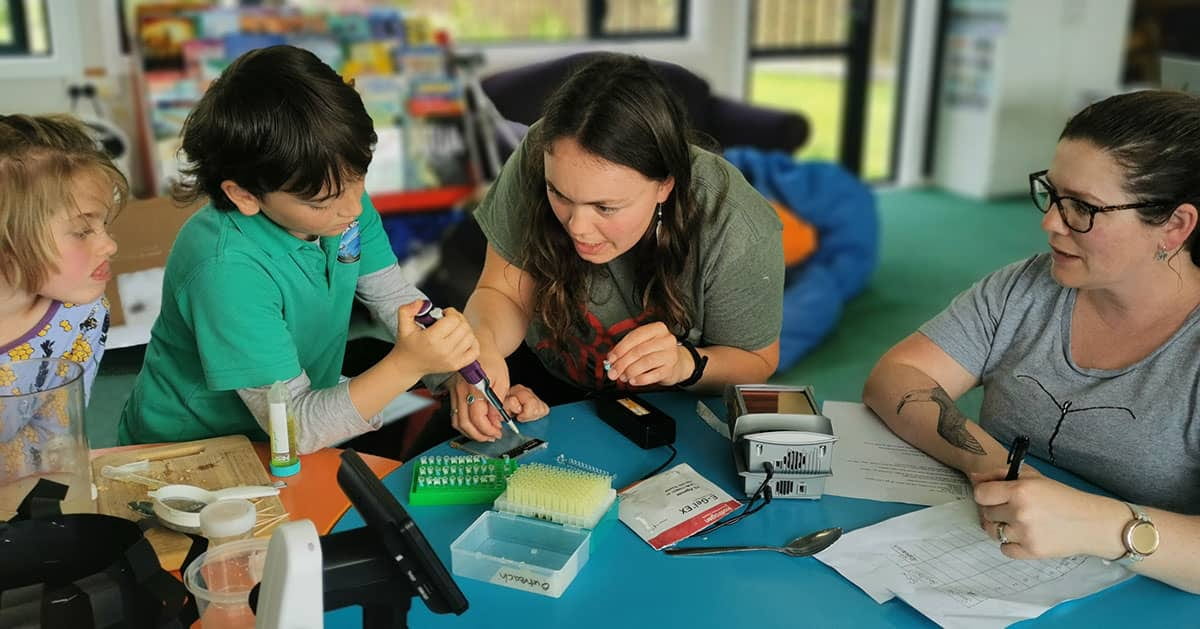
Roseanna Gamlen-Greene teaches students at Kaingaroa School how to pipette.
Our kaupapa was to facilitate connections: connections between scientists from mainland Aotearoa and the Chatham Island community, connections between Chatham Island people and endemic fauna, and connections between species (e.g. karure|kakaruia|Chatham Island black robin and their invertebrate prey).
One of those species is the Rangatira spider, a gentle giant famous for spooking late night visitors to the long drop on Hokorereoro|Rangatira island. It roams for wētā on tree trunks and is a relative to fishing spiders that have particularly whacky mating behaviour – which is what led Chrissie to propose her latest Marsden-funded project.
Despite a population size of only around 700 people, the Chatham Islands supports three schools: Kaingaroa, Te One and Pitt Island. However, the rolls are teeny tiny. At Kaingaroa, way up in the far north-west corner of Rēkohu, our own tamariki doubled the roll for the day, with just two kids in the whole school!
Just Tammy and Tate made it to Pitt Island this time around, where they explored DNA extraction and genetic sexing of birds with four fabulous students, and shared a few stories of how Tammy and her team use genetic and genomic data to help save threatened birds. The full team visited Kaingaroa and Te One, adding pitfall trapping to monitor backyard bugs and bug treasure hunts to the list of activities.
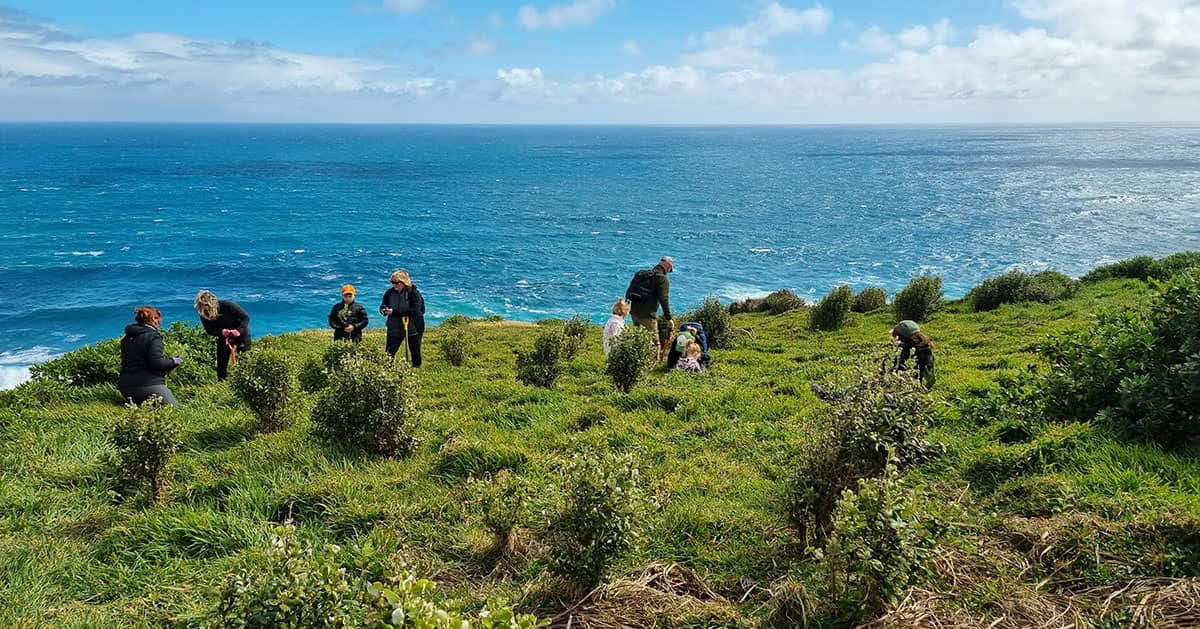
Planting trees at The Gap.
We also organised a weekend public event called ‘Wings, Webs and Wonders’, scheduled to overlap with the one day a week that Bubbles opens her café – it’s the only place and time you can get a serious coffee on the island! We set up a bunch of stands where people could inspect their pitfall trap catches under a microscope, paint a 3D Rangatira spider, and make a bowl of spider soup. We also had a series of genetic and bird-focussed interactive activities where people could extract DNA from split peas, genetically sex birds, eat like a black robin, learn to use pipettes and even touch one of the original traps used by Don Merton to rescue the last of the Chatham Island black robins from extinction. There was a great turnout, saved by the fact the final for the Rugby World Cup was the following morning and not at the same time as our event.
Our team had several special visits with imi | iwi. We had conversations about our favourite study species on Kōpinga Marae (Hokotehi Moriori Trust) over an amazing kai while our kids got to know the local tamariki by doing ninja rolls over mattresses in the wharenui. Tammy and Liz had a special tour of the work done by Maui Solomon (Moriori Imi Settlement Trust) and Susan Thorpe at Manukau, and Chrissie and Liz shared stories over a cuppa tea with members of Ngāti Mutunga o Wharekauri Trust.
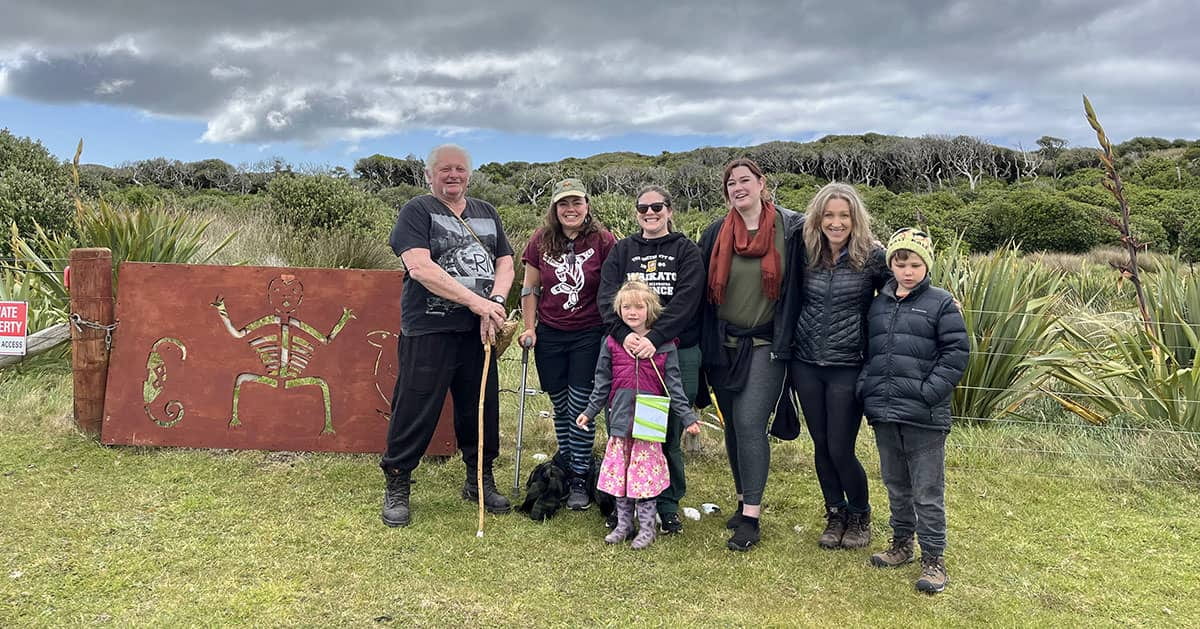
Visiting the kopi forest on Rotorua.
We were blown away by the hospitality of folks on the islands. Our team was treated to a visit to the rakau momori (sacred tree engravings) in the kopi forest at Rotorua, where we learnt moving stories of the Moriori people. It would also be remiss to leave out mention of the TWO occasions we had crayfish donated to us, where Tammy got to introduce the team to Canadian ‘lobster rolls’. Chrissie’s daughter got to boogie with the locals at the annual Halloween Disco, and we all felt rejuvenated by a visit to The Gap where we helped Department of Conservation rangers plant trees perched on the cliffs above the wild waves below.
We are all counting the days until we can return to this special place and its people.
The team were generously supported by seed funding from Te Pūnaha Matatini, the University of Canterbury Vision Mātauranga Development Fund, and two Marsden Fast-Starts (awarded to Chrissie Painting and Liz Parlato).
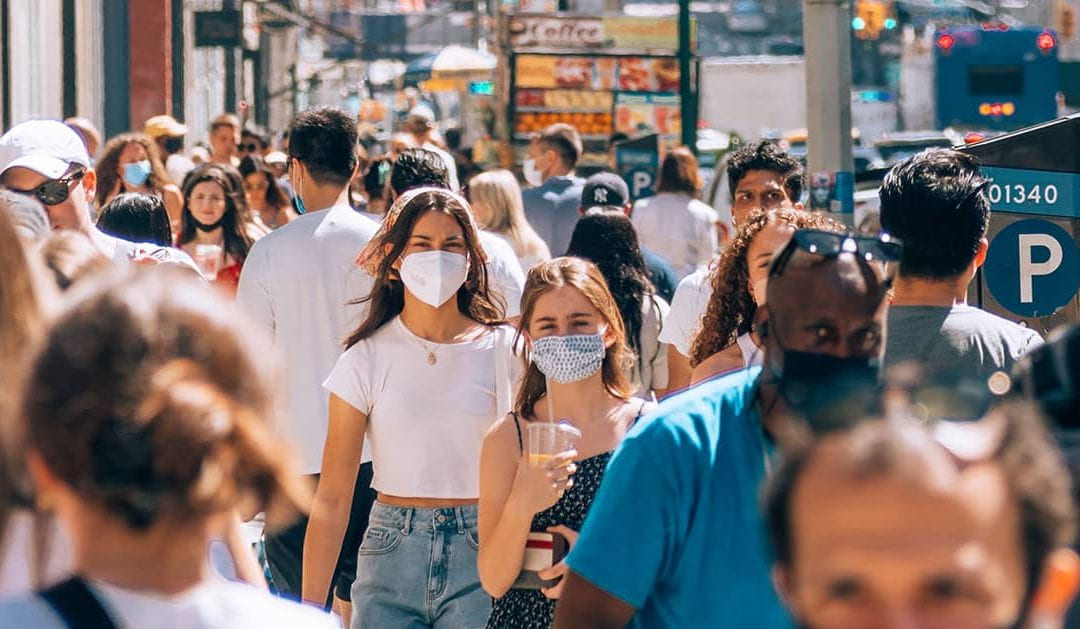
Wanting to ‘move on’ is natural – but women’s pandemic experiences can’t be lost ‘lockdown amnesia’
Header image: People wear masks on the street in Manhattan. Photo by Yoav Aziz on Unsplash.
15 January 2023
Holly Thorpe, Te Pūnaha Matatini, University of Waikato; Grace O’Leary, University of Waikato; Mihi Joy Nemani, University of Waikato, and Nida Ahmad, University of Waikato
The COVID-19 pandemic was – and continues to be – hugely disruptive and stressful for individuals, communities and countries. Yet many seem desperate to close the chapter entirely, almost as if it had never happened.
This desire to forget and move on – labelled “lockdown amnesia” by some – is understandable at one level. But it also risks missing the opportunity to learn from what happened.
And while various official enquiries and royal commissions have been established to examine the wider government responses (including in New Zealand), the experiences of ordinary people are equally important to understand.
As researchers interested in women and gender roles, we wanted to capture some of this. For the past three years, our research has focused on what happened to everyday women during this period of uncertainty and disruption – and what lessons might be learned.
Pandemic amnesia
Individual memory can become vague as time goes on. But this can also be affected by broader narratives (in the media or official responses) that overwrite our own recollections of the pandemic.
Political calls to “live with the virus”, and media hesitancy to publish COVID-related stories due to perceived audience fatigue, can create a collective sense of needing to “move on”. Looking back can be seen as questionable, or even attacked.
Indeed, misinformation and disinformation have been used, in the words of leading pandemic social scientist Deborah Lupton, to “challenge science and manufacture dissent against attempts to tackle [such] crises”.
But as the memory scholar Sydney Goggins has put it, such “public forgetting leads to a cascade of impacts on policy and social wellbeing”.
A gendered pandemic
Responding to the rapidly changing social, cultural and economic impacts of the pandemic, feminist scholars have highlighted the particular physical and emotional toll on women worldwide.
This has included social isolation and loneliness, increased domestic and emotional labour, the rise in domestic and gender-based violence, job losses and financial insecurity. Black, Indigenous, minority and migrant women have felt these impacts particularly keenly.
The same trends have been observed in Aotearoa New Zealand. And whereas some countries embraced pandemic recovery strategies that recognised these gender differences, this hasn’t been the case in New Zealand.
The gendered abuse of women leaders – former prime minister Jacinda Ardern and scientist Siouxsie Wiles, for example – have been well documented. But the experiences of ordinary women, their struggles and strategies to look after themselves and others, have had much less attention.
Experiences of everyday women
Our study involved 110 women in Aotearoa New Zealand. We set out to understand how they adapted their everyday practices – work, leisure, exercise, sport – to maintain or regain wellbeing, social connections and a sense of community.
Despite many differences between the women in our sample, there were also shared experiences. We referred to the ruptures in the patterns, rhythms and routines of their lives as “gender arrhythmia”.
The women responded to the psycho-social and physical challenges, such as disrupted sleep or weight changes, by creating counter-rhythms – taking up hobbies, exercising, changing diet.
The pandemic also prompted many to reflect on how their pre-pandemic routines and rhythms had caused various forms of “alienation”: from their own health and wellbeing, meaningful social connections, ethical and sustainable work practices, and pleasure.
The disruption of the pandemic caused many to reevaluate the importance of work in their lives. As one reflected:
COVID-19 has made me reassess what is the most important thing. Is it making money? Actually, no, not at all.
Others were prompted to question and challenge the gendered demands on women to “do everything” and “be everywhere” for everyone:
I think as women, because we’re so good at multitasking, we just put so much on our plates. I think we need to learn just to say no, because we’re not superhuman. And ultimately, all of this responsibility is weighing us down.
Our research also highlighted how the pandemic affected women’s relationships with familiar spaces and places. Leaving home for a walk, run or bike ride became important everyday practices that proved highly beneficial for most women’s subjective wellbeing.
Some came to appreciate physical activity for the general joys of movement and connection with people and places, rather than simply to achieve particular goals like fitness or weight loss.
Special challenges for young women
As part of our overall project, we also focused on 45 young women (aged 16 to 25). This highlighted the importance of recognising how gender, ethnicity and socioeconomic circumstances intersect.
Listening to their pandemic stories, we found young women played important roles in supporting their families and communities.
In particular, Māori, Pacific and others from diverse ethnic or migrant backgrounds carried increased responsibilities in the home, including childcare, cleaning, cooking and shopping. While many did so willingly, these extra burdens took a toll on their schooling, mental health and wellbeing.
For many young women, the pandemic was a radical disruption to their everyday lives and routines during a critical stage of identity development. They missed key milestones and events, and crucial phases of education and social development.
Many still grieve for some of those losses. And some are struggling to rebuild social connections, motivation and aspirations.
For example, some described being passionate and aspiring athletes before the pandemic. But social anxieties and body-image issues left over from lockdowns have been hard to shake, and have seen them struggle to return to sport.
The invisible work of migrant women
We also looked deeply at the experiences of 12 middle-class migrant women, and how prolonged border closures created real anxiety about “not being there” for families overseas.
As one nurse working on the front line of COVID care in NZ explained:
About a year ago, the cases of COVID in my homeland were increasing so rapidly. My family were not very well and I was depending on social media […] trying to reach out to them. I was really scared at that time, not being able to see your family when they really need you, not being able to be with them.
Some of the women in our sample also experienced increased anti-immigrant sentiments which further affected their health and wellbeing – and their feelings of belonging. As one said:
I’ve become extremely sensitive. I cry about small things. My doctor said “go and get some fresh air, it’s good for you” […] I went outside for a walk, and someone shouted at me, screamed at me. I got terrified for my life. How do you expect me to have wellbeing when no one in the society accepts you?
This arm of the research suggests a real need for investment in policies and support strategies specifically for migrant women and their communities in any future global health emergency.
Communities of care
A key feature of our study was the highly creative ways women cultivated “communities of care” during the pandemic. Even when they were struggling themselves, they reached out to friends and family – and particularly other women.
The majority of our participants were prompted to think differently about their own health and wellbeing, and what is important in their lives (now and in the future).
Throughout the pandemic, women have worked quietly, behind the scenes, in their families, communities and workplaces, supporting their own and others’ health and wellbeing. This invisible labour is rarely acknowledged or celebrated.
Many still feel the toll of economic hardship, violence and exhaustion. And less tangible feelings of disillusionment remain in a society that has so quickly “moved on” from the pandemic.
Acknowledging and addressing pandemic amnesia – personal and collective – is an important first step in documenting, learning from, and using these experiences to better prepare for future events. Next time, we need to ensure the necessary support is available for those most in need.
The authors wish to acknowledge the other members of the research team: Dr Nikki Barrett, Dr Julie Brice, Dr Allison Jeffrey and Dr Anoosh Soltani.![]()
Holly Thorpe, Principal Investigator, Te Pūnaha Matatini, Professor in Sociology of Sport and Gender, University of Waikato; Grace O’Leary, Research Fellow, University of Waikato; Mihi Joy Nemani, Senior Lecturer, Te Huataki Waiora School of Health, University of Waikato, and Nida Ahmad, Research Fellow, University of Waikato
This article is republished from The Conversation under a Creative Commons license. Read the original article.
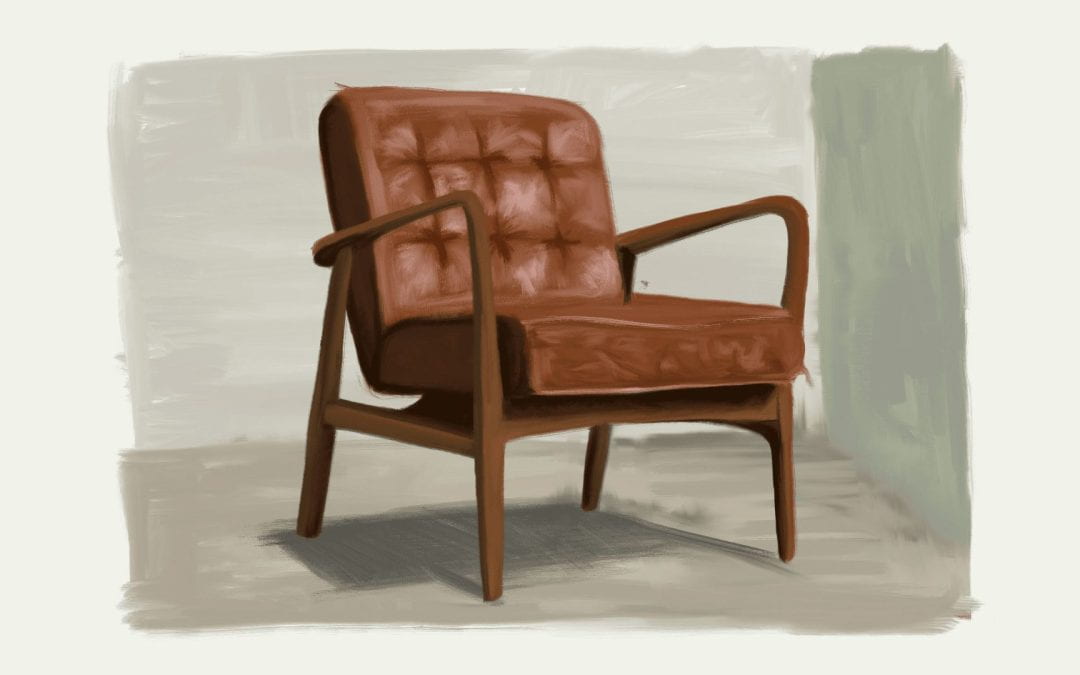
The past, the present and the future
20 December 2023
A collaboration between market analyst Hamza Ajmal and illustrator Jean Donaldson. Edited by Jonathan Burgess.
Objects are collections of essences.
I am sitting in my living room on a leather chair against a wall. The living room walls are off-white in colour with a few scratches, marks and scribbles on them. The chair is dark brown, made of leather and wood. The living room and the chair, according to the Ancient Greek philosopher Aristotle, possess unique essences derived from their materials and form. The walls are off-white, so they have an off-white essence. The chair is made of leather, foam and wood. It is formed by the amalgamation of these elements, creating the very essence of a chair.
The essences of an object have stories to tell.
According to Avicenna — the preeminent philosopher and physician of the Islamic Golden Age — the essences of an object are actually information. One can make informed inferences about an object by observing it. For example, the marks on the walls suggest movement of large objects through the living room that have hit the walls. The pencil scribbles suggest that children have played in the room. The chair has some chips and indentation in the seat, suggesting it is in a used condition, has been used for long sittings, and has been moved around.
The things that are old were once young.
Avicenna argued that when the chair was originally made, it stood untouched by the hands of time. As the days unfolded, however, information inscribed itself upon the chair — each scratch, movement, and sitting contributing to its evolving story. Each marking tells a story of the chair’s past and is not a mere imperfection. In other words, there is a relationship between information and time. As time goes by the universe increases the amount of information.
Avicenna — elaborating on this logic — argued that the world is not a collection of static things, but a dynamic flow of information across time. Instead of thinking about the future where there is more information, if we go back in time there is less and less information, and at some point, we reach a moment where there is the minimum amount of necessary information for an object to unravel itself from that moment.
The things that are soiled were once pristine.
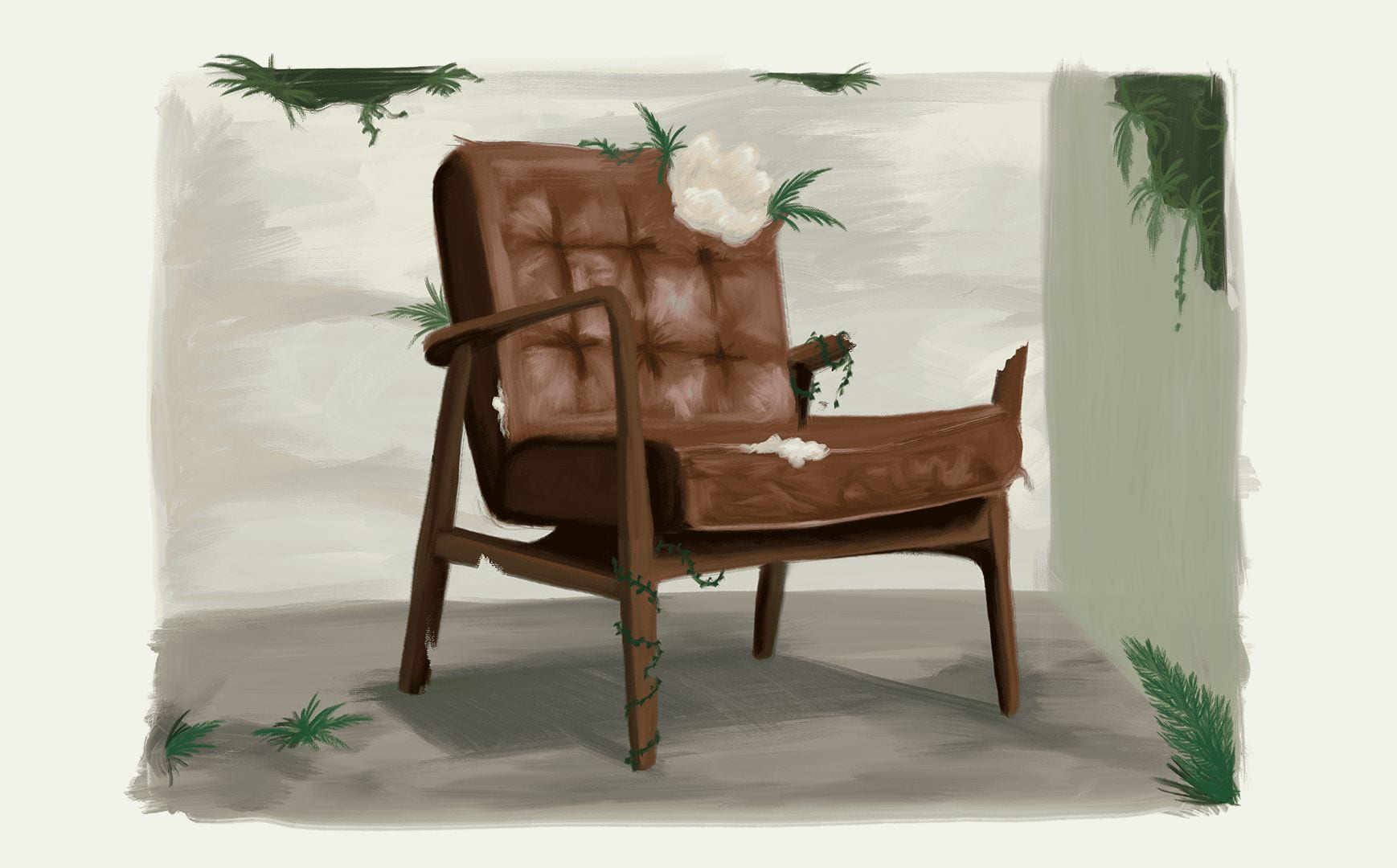
The laptop I am currently using to write is three years old. It is well maintained, and has no signs of scratches or marks. I have taken good care of it, especially after my prior computer’s unfortunate encounter with Sprite and cappuccino. Fortunately, the laptop didn’t break. However, some of the liquid dried within the keyboard. For someone who likes Macbooks for their keyboard, typing with sticky keys is a pretty awful experience.
The markings on an object are results of actions.
Over the last few years, my newsfeed has become more and more rife with climate catastrophes, the endangerment and extinction of species, and potential threats to human survival. A part of my work is to observe and forecast external factors that can have an impact on New Zealand and the world economy. The climate pattern El Niño is appearing increasingly frequently amongst these factors.
Among the various risks associated with El Niño, global food security is a significant concern. For New Zealand, repercussions of extreme weather events are multifold, ranging from economic disruption to loss of life. A recent manifestation was Cyclone Gabriele in early 2023, the aftermaths of which are still lingering across the country and will continue to do so for some time. If we view the environment as the walls of my living room, the current state of my living room is a direct result of past actions.
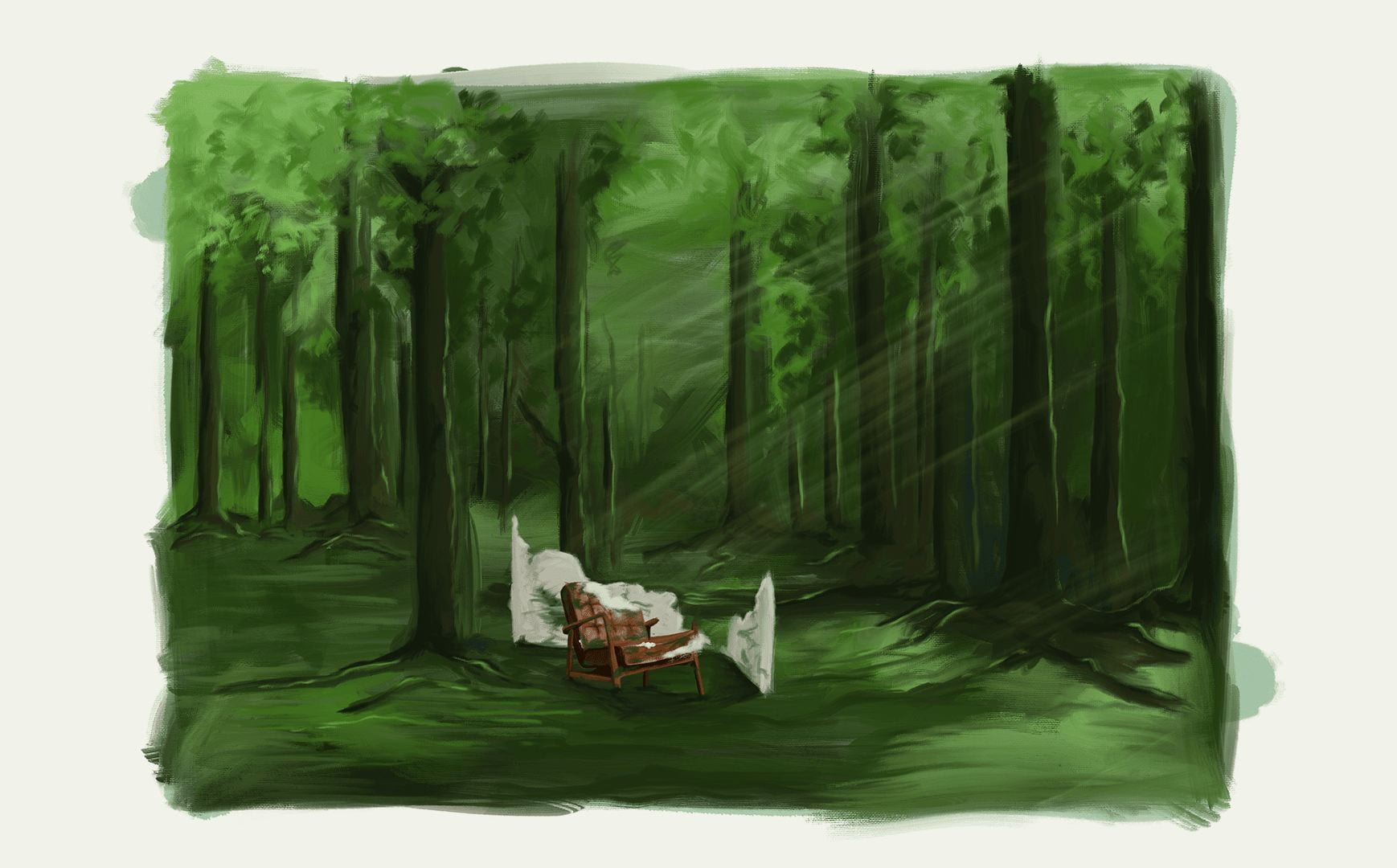
Kia whakatōmuri te haere whakamua.
In Māori philosophy the conceptualisation of time does not leave the past behind; one carries one’s past into the future. These concepts are similar to the philosophical narratives of Aristotle and Avicenna that things are connected with time. If we seek to put things back in order, maybe it is a wise idea to revisit the past — where there are less and less markings on our environment — and learn from the practices of our ancestors that lived in harmony and connection with their environment.
I walk backwards into the future with my eyes fixed on my past.
Hamza Ajmal is a principal investigator with Te Pūnaha Matatini who researches in the areas of finance, economics, and sustainability.
Jean Donaldson is a designer and illustrator who works with Toi Āria: Design for Public Good. She is based in Te Whanganui-a-Tara. You can see more of her work at https://jeanmanudesign.com/.
